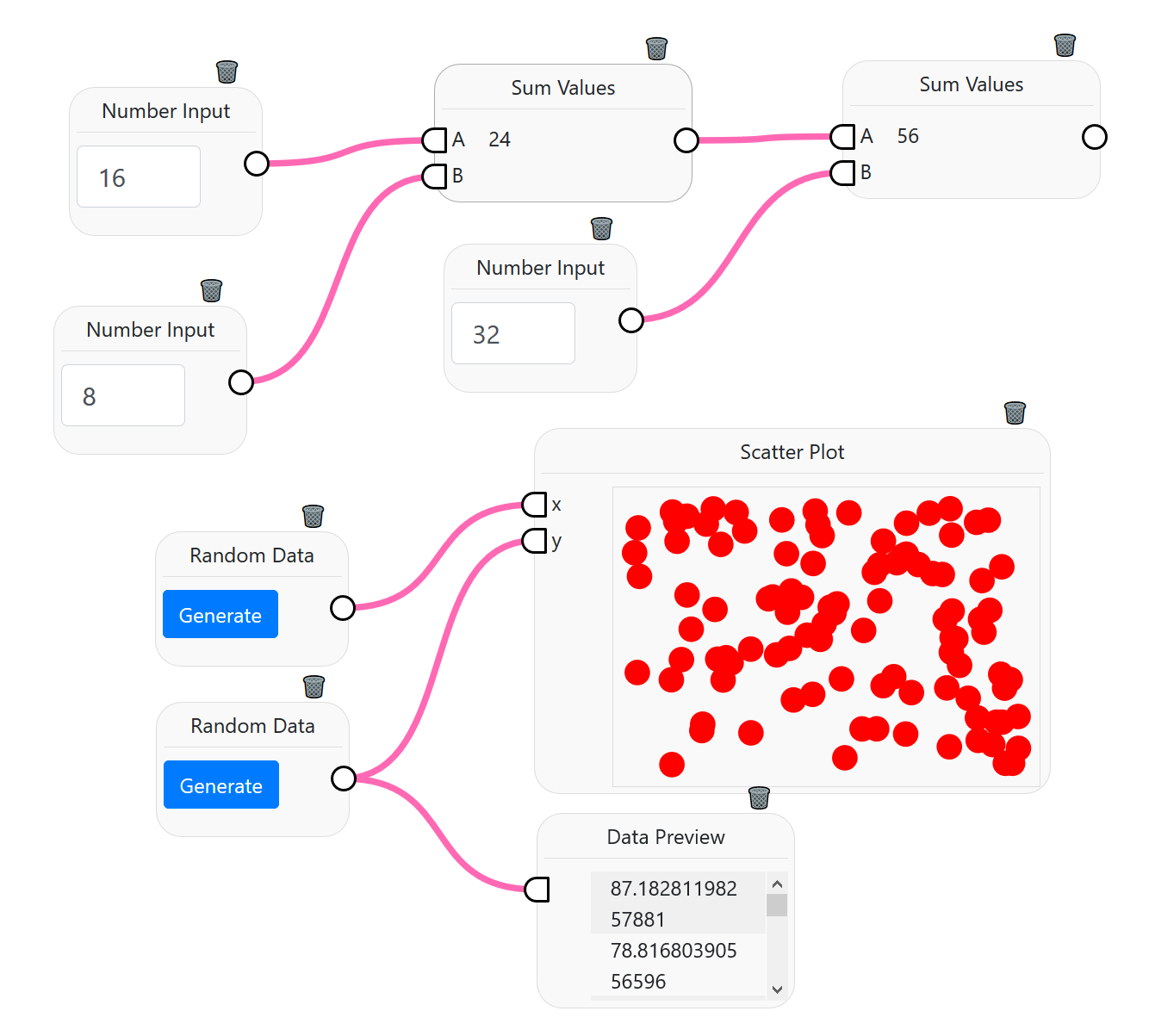0.3.0 • Published 5 years ago
compute-nodes v0.3.0
compute-nodes
Create any logic or data transformation using visual nodes!

Install
npm install --save compute-nodesUsage
See examples/ to have a better idea of how to use this framework.
cd examples
npm startIn short, you need to define a resolver that will process the data from the nodes and associate any data between the node connections.
1- Define and register some nodes:
class SomeNode extends CanvasNode {
data: {
x,
y,
z
}
// Define some metadata
// This can be defined anywhere, you will need to specify this later
// Specify the input and output format
static InputFormat = {
in1: {
type: "any",
visualName: "Input 1"
}
};
static OutputFormat = {
out1: {
type: "any",
visualName: "Output 1"
},
anynamehere: {
type: "any",
visualName: "Output 2"
}
};
// Provide a construct method:
static Construct = (args) => {
// Feel free to do any special initialization
return new SomeNode(args);
}
// LocalResolve is just an example using a Local Node Resolver
// You can implement any kind of resolver, that can use a backend
// to generate some data, for instance.
// @See example/src/resolver/LocalNodeResolver.ts
static LocalResolve = (node, input) => {
return {
out1: input.in1 + 10,
anynamehere: input.in1 * 10;
}
}
}2- Register your types
// Create a NodeRegistry and register your types:
const nodeRegistry = new LocalNodeRegistry();
// Register type allow you to pass in some properties that are merged with the ones
// found in the class definition provided in the first argument
// This may be useful to override part of the behaviour of some node type
// Or in case you don't have the definition of some properties at compile time, for instance
nodeRegistry.registerType(SomeNode, {
render: (props) => <SomeNodeVisualComponent {...props}/>, /*...others...*/});3- Setup a node resolver and provide it to a canvas
// Create your node resolver
const resolver = new LocalNodeResolver(nodeRegistry)
// And provide the resolver to a canvas component
function NodeGraphCanvas() {
return <Canvas resolver={resolver}/>
}License
MIT © MateusMP